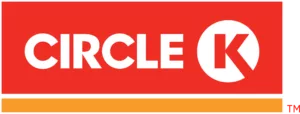A couple of years ago, I was consulting with a local restaurant that had been in business for decades. The owner was popular, the food was excellent, and the restaurant had a loyal following of regular customers. But one evening, a new server screwed up—he served alcohol to an underage customer who had slipped past him with a phony ID. The server wasn’t negligent; he simply hadn’t had a refresher on what to look for recently. The aftermath was ugly: fines, a bruised reputation, and a team that suddenly felt inadequate.
That was a valuable lesson that stuck with me to this day: Food & Alcohol Compliance training is not a one-and-done. It has to be updated regularly, or even your best staff can get themselves into situations they don’t know how to manage.
Food & Alcohol Compliance: Why it’s tricky to keep up
Running a food or beverage business is like spinning plates. You’re handling inventory, staff changes, customers with high expectations, and all the usual daily fires. In that mix, compliance training often slips to the bottom of the list. The problem is, that’s exactly when mistakes happen—when staff haven’t had recent reminders and are left to make judgment calls on the fly.
Consider this: a bartender who hasn’t had ID-check training in two years is more apt to miss a counterfeit. A cook who hasn’t been reminded of storage procedures may shave a corner during a busy period. A server may not cut off an obviously intoxicated patron because they haven’t rehearsed pushback. These are not bad workers—they’re just working without the tools they require.
Turnover is another challenge. Turnover in restaurants and bars is legendary. A crew you trained over the summer may be entirely different this summer. If you’re not keeping training current, you’re creating holes—and holes are just where violations find a foothold.
Why updating training matters more today
The business has evolved. Consumers demand professionalism and safety, regulators are more stringent, and the internet amplifies everything. A few years back, you could make a mistake within your four business walls. Today, one social media video can explode before you can repair it.
Picture what happens if a staff member is caught serving alcohol to a young person or not handling food correctly on video. Even if you manage to resolve things in law, public trust is much more difficult to regain once lost online.
But there is a silver lining: when companies stay up-to-date with training, it pays off. Customers appreciate when employees deal with issues professionally, food is prepared hygienically, and alcohol service is conducted responsibly. That earns their trust—and trust is what returns repeat customers.”.
It also makes workers feel secure. When employees understand the rules and have rehearsed challenging situations, they don’t simply prevent errors—neither do they merely meet minimum standards. They offer higher-quality service. They can say “no” to a phony ID with confidence, clearly outline food safety regulations, and handle difficult exchanges without anxiety. That sort of professionalism reflects well.
A bigger responsibility than just avoiding fines
The numbers are staggering. According to the CDC, one in six Americans becomes ill from tainted food every year, which equates to approximately 48 million people. These illnesses lead to about 128,000 hospitalizations and 3,000 deaths annually in the U.S. Alcohol-related events claim tens of thousands of lives each year in America. Those are real people, not mere statistics.
That’s why updating Food & Alcohol Compliance training isn’t just about passing inspections or dodging penalties. It’s about keeping communities safe. Every time a staff member makes the right call—whether that’s refusing service to an intoxicated customer, washing their hands properly, or catching a food storage risk—it’s a reminder that we’re in a business that affects people’s health and well-being.
When you present training this way—not as a check box but as a commitment to your community—it is given more importance. Workers start to realize that their job is not merely serving beverages or preparing food. They become a safety net that insulates people day after day.
How often should Food & Alcohol Compliance training be updated?
Here’s what is best for most companies:
- Yearly refreshers. Every year, review all the major topics—food handling, alcohol regulations, company policies. Consider it a deep clean for information.
- Quarterly touchpoints. Quick, 15–20 minute refreshers keep the information top of mind. Utilize them to discuss ID-checking, safe storage, or handwashing protocols.
- Legislative updates when laws update. If your state has new regulations, update training right away. Don’t wait.
- Onboarding for new hires. All new employees should begin with compliance training before they set foot on the floor.
- Scenario practice. Role-play actual scenarios so employees feel prepared when it matters.
The real solution to “how often” is: frequently enough that your employees never have to wonder.
Making Food & Alcohol Compliance a shared responsibility
The owner may establish the tone, but compliance doesn’t stick without the entire team. Managers must demonstrate it, and frontline employees must execute it in the moment. What works best is building a culture where individuals feel supported, not second-guessed. A server who cuts off another person or a cook who calls out unsafe storage should feel supported, not second-guessed.
One way to create this culture is by fostering open discussion. If a person observes a food safety hazard or a dubious alcohol service situation, they must feel at ease discussing it. Companies that view these discussions as constructive input—rather than complaints—are safer and more resilient.
Industry groups, regulators, and even local business associations also provide resources and training updates. Tapping into those networks makes the load lighter and shows your team you’re invested in keeping up with the latest standards.
Real-world lessons
I used to work with a sports bar that had not refreshed its training for years. Employees were flying by the seat of their pants, and ultimately, an overserved customer got into an accident and left. Lawsuits and fines nearly closed them down. It was tragic, particularly because consistent training would have avoided it.
And then there’s the tiny catering company I know in California. They integrate compliance into their normal routine—little reminders on a quarterly basis, integrated into staff meetings. Inspectors dropped by unexpectedly one day, and the team aced it. Word of that got around to clients, and suddenly they weren’t only famous for the grub—they were famous for being reliable and trustworthy.
These two anecdotes point up the contrast: ignoring compliance can kill a business, while making it a priority can be a selling point.
Keeping the habit alive
Updating training needn’t be complicated. It’s about creating habits that last. Schedule annual refresher in the calendar so they don’t fall through the cracks. Attach quick checklists to daily compliance tasks. Pair new employees with veterans who demonstrate good practices. Reward when workers catch errors or speak up—it reinforces the culture.
You can also use technology to your advantage. Short training videos, online quizzes, and mobile reminders make it easy to keep compliance top of mind without pulling staff off the floor for long stretches. The key is consistency.
Over time, compliance stops feeling like an extra task and becomes part of the rhythm of work. That’s when it works best—when it’s second nature.
The real takeaway
So, how frequently should Food & Alcohol Compliance training be refreshed? As frequently as it takes to leave your staff feeling confident and ready. At least once a year, with more frequent shorter refreshers in between, and straight away when the law changes.
It is the companies that approach training as a living, breathing entity of their culture—not some dusty binder on a shelf—that avoid trouble, gain customer confidence, and assemble teams that can make the hard calls when the time arrives.
If it’s been too long since your training program was updated, now’s the time. Begin small: deliver a refresher this month, discuss an actual scenario in the next shift meeting, or review new rules. The more frequently you mention compliance, the safer your business—and your customers—will be.














